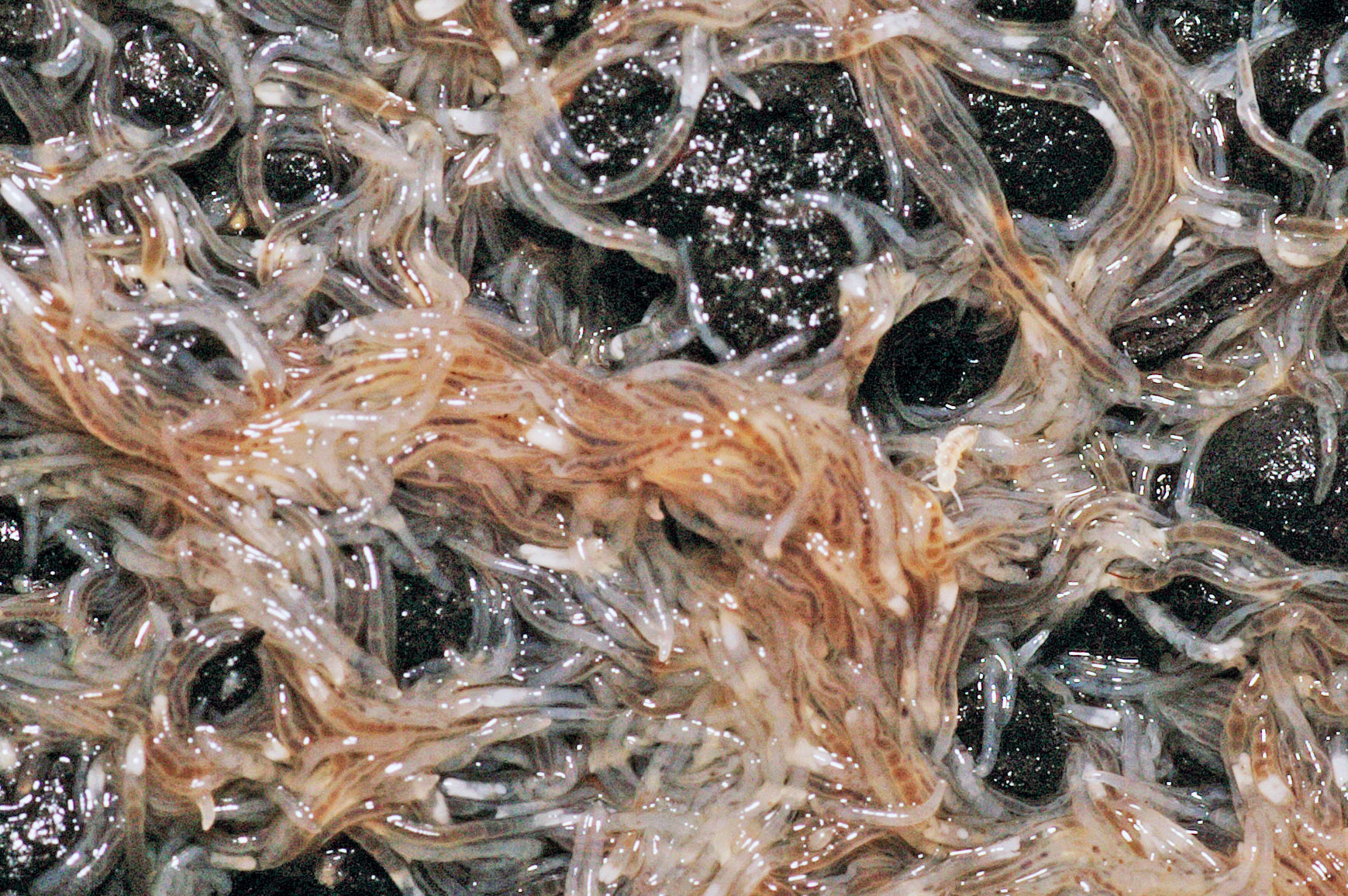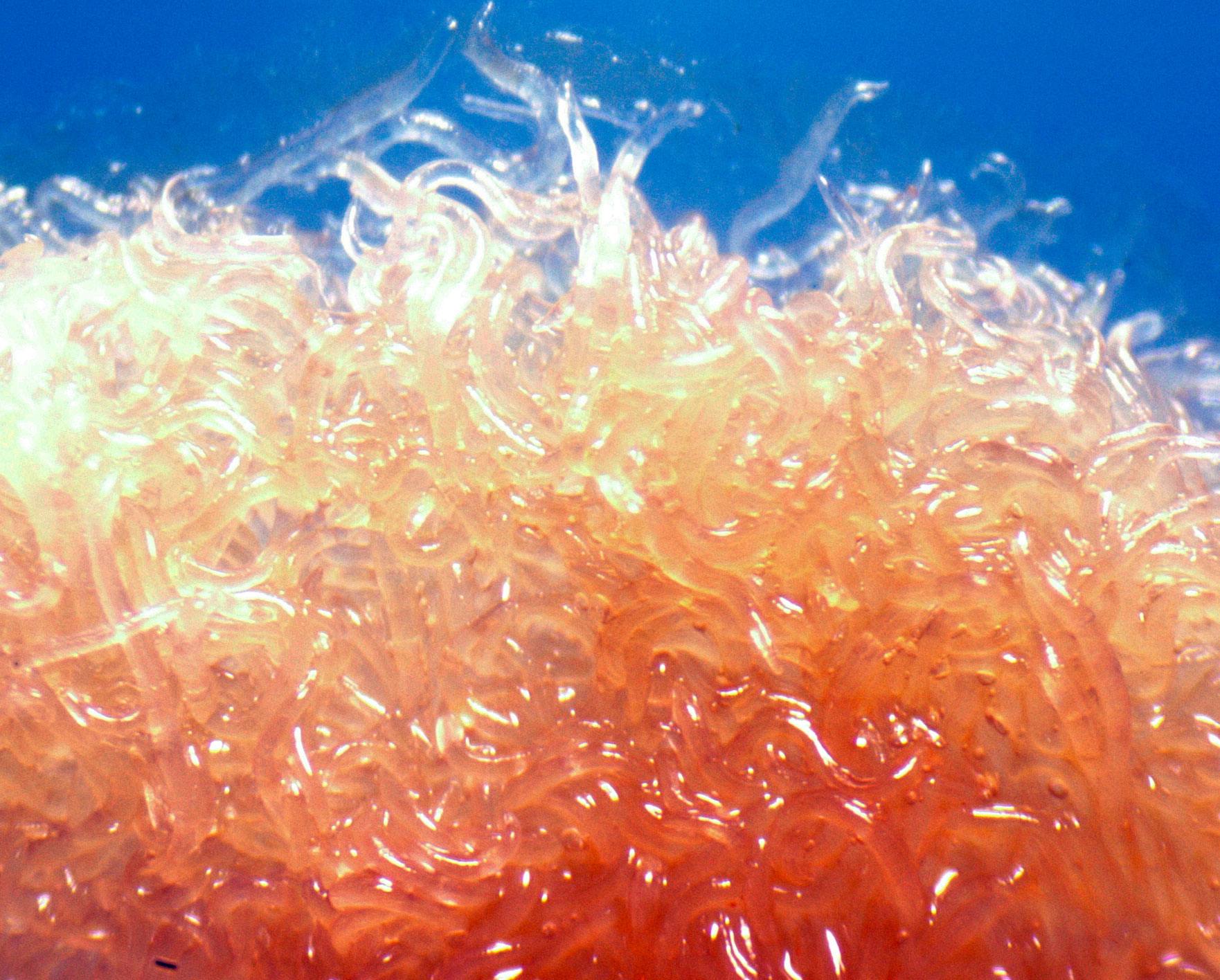Breeding live food yourself
Enchytrae, grindal worms and microworms are an easy way to add variety to the diet of fish and shrimp
Blog Fütter, Zucht, DIY, Wurm, Food, breeding, worm
Microworms (Turbatrix silusiae)
belong to the nematode family and are approx. 1 - 3 (4) mm long. They live in fermenting substances and feed on the microorganisms they contain. They sink to the bottom of the aquarium, in contrast to acetic acid worms, which can move freely in the water. The worms are very suitable as young fish food as part of a varied diet, but are also readily accepted by various smaller adult ornamental fish (livebearers, characins, etc.). They seem to be particularly interesting for bottom dwellers.
Breeding them is relatively easy and requires little effort. There are many recipes for this, of which we would like to present just one:
Oat flakes are mixed with whole milk to form a viscous porridge and boiled briefly if necessary. With good reproduction, the surface liquefies by itself after a short time, so the porridge should really be relatively firm at the beginning. Pour the porridge about 0.5 cm high into standard jam jars with screw lids and leave to cool or swell. If the oatmeal porridge seems too tough, simply add a few drops of fresh milk to the breeding substrate. Then add the breeding mixture or 1/2 teaspoon of porridge from a well-running culture. As the worms die in absolutely airtight containers and fruit flies quickly find their way into open cultures, especially in summer, you should put the lid on loosely. Odour development is low. A temperature of around 20 °C is ideal for development. If the ambient temperature is warmer, the use of relatively shallow freezer trays has proved to be quite effective in some cases. If undesirable micro-organisms (creamy skin...) should appear, the easiest way is to loosen the culture on the surface and, to be on the safe side, to start a new culture with worms not directly from the broth of the infested culture.
The worms crawl up the wall of the container after just a few days and are easiest to remove cleanly with a brush. The reason for the worms crawling up the walls is linked to their high oxygen requirement. However, you should never remove worms directly from the growing medium! As the worms sink to the bottom, you can put them back in water before feeding and pour off the supernatant after a short time. This will partially rinse off any residues of the culture medium that may contain high levels of bacteria, which can harm sensitive animals. The relatively fat-rich worms should also only be fed sparingly.
In order to achieve particularly strong reproduction and particularly high-quality worms, you can add some fresh yeast, sugar and a multivitamin preparation to the batch.
If the worms are removed regularly, multiplication usually decreases significantly after 2 to 3 weeks at the latest and a new batch is necessary. If only a small amount is removed, the slurry becomes too liquid after a few weeks and the culture must also be restarted.
Grindal worms (Enchytraeus buchholzi)
Breeding this excellent nutrient-rich live food (whitish, 5 - 10 mm long) requires little effort and is almost odourless. However, the worm larvae must be fed regularly (preferably daily) with tender oat flakes and sprayed with water if necessary. This care measure can also prevent the excessive proliferation of mites, but cannot completely rule them out.
A plastic bowl that is not too small is suitable as a breeding container, which is filled halfway with the moist substrate (watered peat or peat granules, coconut or clay granules). It is important to use a very close-meshed, air-permeable cover to prevent the entry of pests (flies, etc.). Every day, the feeding place in the breeding container should be about 1 - 2 cm next to the place where the food was offered the day before. It is covered with a glass or transparent plastic plate. The worms can then be removed cleanly from here. For sensitive young fish, the worms can be rinsed in a fine sieve under running water before feeding.
Temperatures around 20 °C are ideal. Above 25 °C it becomes problematic for the worms. It has proven to be favourable to prepare several new culture trays at intervals in order to secure the stock if a batch is lost. To be on the safe side, especially in summer, you should set up a batch in a cooler cellar.
Enchytraea (Enchytraeus albidus)
The protein- and fat-rich enchytraeus are significantly larger than the grindal worms and are easiest to breed in a natural wood box that is not too small. Compared to grindal worms, breeding is even simpler and easier to care for. A well-sealing cover with a few air holes, which are closed with close-meshed gauze, has proven to be favourable. This prevents the entry of unwelcome inhabitants (flies, etc.) and the migration of the woodlice. Breeding requires little effort and there is practically no unpleasant odour.
As a substrate, you can simply use potting compost or sterilised forest or compost soil, which should always be slightly moist but not wet. The optimum breeding temperature is in the range of 12 - 15 °C.
In the simplest case, oat flakes with milk and a little sugar can be boiled briefly and the cooled, viscous porridge fed. However, cooked vegetables and fruit are also suitable and can be incorporated into the feed. The food should be offered in the centre of the brooder under a glass or transparent plastic screen.
To prevent a strong development of mites, you can try adding a few woodlice to the culture. However, the most important thing to prevent mites is feeding. The food should be completely eaten within a short time (1 - 2 days). Mouldy food should always be removed.
See also in Living food cultures in the DRAK guide



